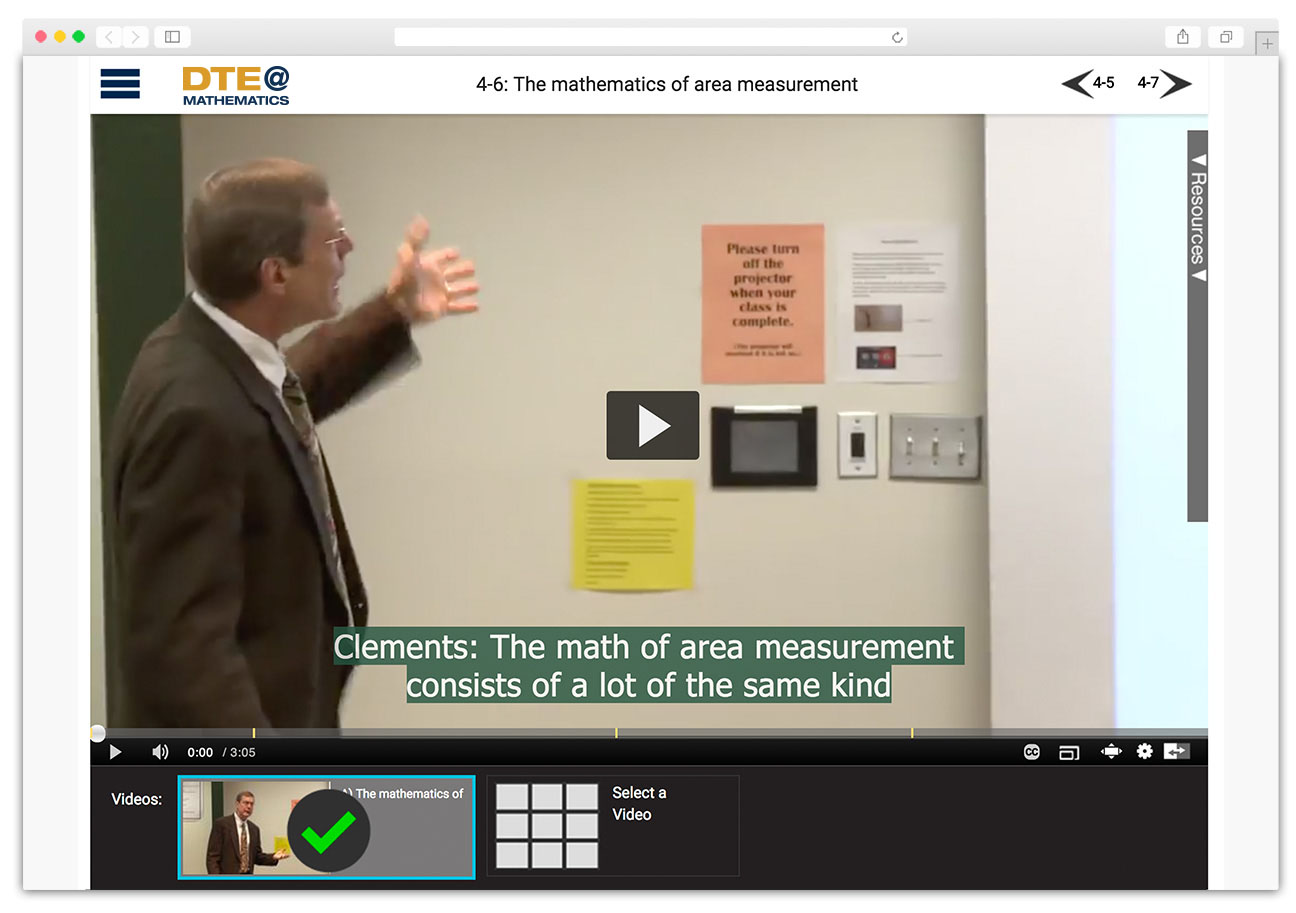Geometric-measurement - Session 4: Area Learning Trajectory – Mathematical goals
Part 6: The mathematics of area measurement
Overview
The key concepts of measurement that were introduced in Session 1 apply to area measurement as well as length measurement. This part of the session focuses on how these key concepts apply in the context of area measurement. This part also involves considering an example of student work as a way to continue thinking about the key concepts involved in measuring area.
Key Points
- Foundational concepts of measurement include: understanding of the attribute, conservation, transitivity, equal partitioning, origin, iteration of a standard unit, accumulation, and relation between measurement and number. For example:
- All measurement depends upon equal partitioning, or partitioning the attribute being measured into units of equal size. In the case of area, measurement involves partitioning the area of an object into equal-size squares.
- Measurement (in general) involves:
- Identifying a unit of measure and subdividing (mentally and physically) the object by that unit, and
- Iterating that unit without gaps or overlaps.
In the case of area, two dimensions are being considered.
